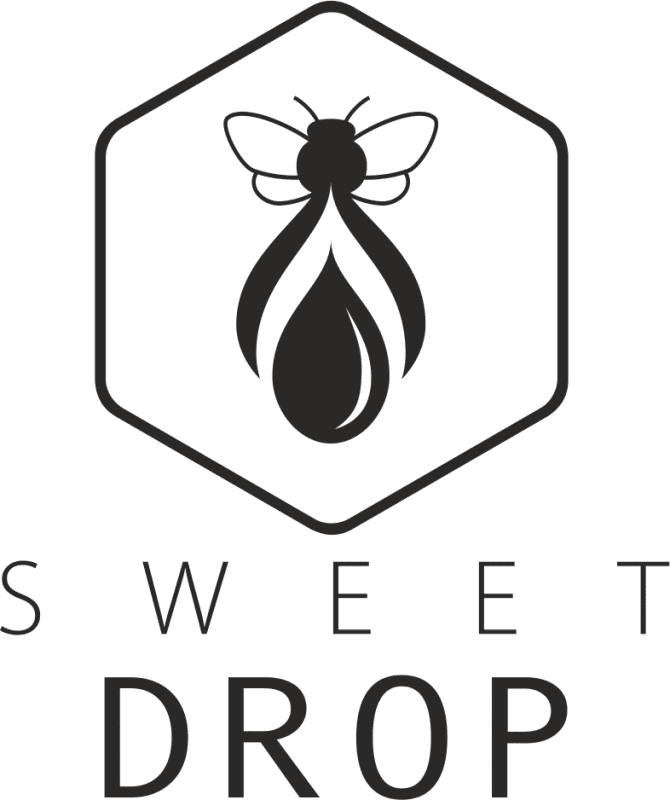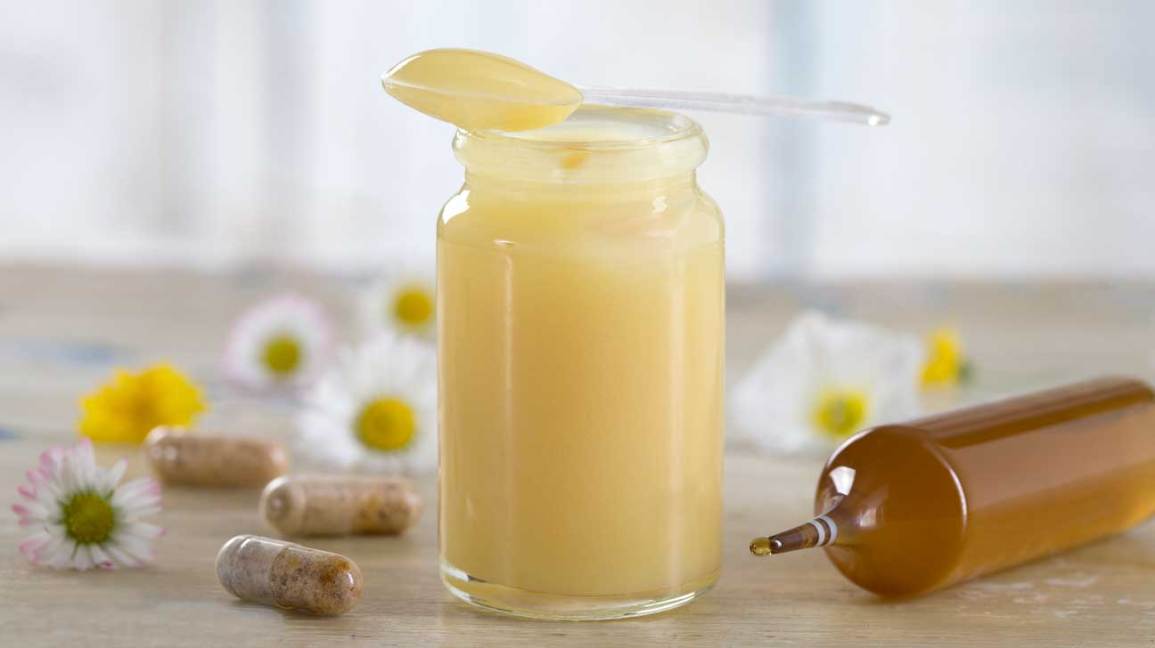Royal jelly is secreted by the hypopharyngeal gland (sometimes called the brood food gland) of young worker (nurse) bees, to feed young larvae and the adult queen bee. Royal jelly is always fed directly to the queen or the larvae as it is secreted; it is not stored. This is why it has not been a traditional beekeeping product. The only situation in which harvesting becomes feasible is during queen rearing, when the larvae destined to become queen bees are supplied with an over-abundance of royal jelly. The queen larvae cannot consume the food as fast as it is provided and royal jelly accumulates in the queen cells. The exact definition of commercially available royal jelly is therefore related to the method of production: it is the food intended for queen bee larvae that are four to five days old.
It is mainly the spectacular fertility and long life-span of the queen, exclusively fed on royal jelly, which have suggestively led people to believe that royal jelly produces similar effects in humans. In the early 1950’s, articles began to appear, particularly in the French beekeeping press, in praise of the virtues of royal jelly, referring to research conducted in several hospitals. Chauvin (1968) however, was unable to find the source of such information and therefore considered it unfounded.
The myth of royal jelly started with an amazing biological phenomenon on the one hand and commercial speculation on the other, which, on the basis of initial results obtained by entomologists and physiologists, exploited the suggestibility and imagination of consumers willing to be seduced by the fascination of this rare and unknown product was exploited. In fact, royal jelly was so rare and so little known that it was impossible to verify its actual presence in many products claiming its content.
In the years immediately following its first marketing, royal jelly quickly became widely known and consumed and the increasing demand motivated experts to refine production techniques and led more and more beekeepers to specialize in this activity. At the same time, research on quality control of the commercial product and identification of its biological and clinical properties found growing support.
Consumption of royal jelly has been growing ever since, even without its benefit to human health having ever been scientifically confirmed. The Western medical establishment has always been wary of the effects claimed for this product and in most cases refuses to consider it, largely because of the way royal jelly was initially promoted. In spite of a vast number of publications praising its virtues and the apparently abundant bibliography, there is still a serious lack of scientific data on the clinical effects of royal jelly.
A list of properties, benefits and improvements attributed to royal jelly quoted from personal case histories and non-scientific literature.
Internal Use:
- Tonic
- Stimulant – physical performance, better memory, learning capacity and self-confidence
- General health improvement
- Anorexia
- Increased appetite
- Skin conditions
- Sexual desire and performance
- Influenza
- Increased resistance to viral infections
- High blood pressure
- Low blood pressure
- Anemia
- Arteriosclerosis
- Cholesterol levels
- Chronic and incurable disorders
External Use:
- Skin conditions
- Epithelial stimulation and regrowth
- Anti-wrinkle
- Sebaceous secretion (fat secretions of skin glands) normalized



